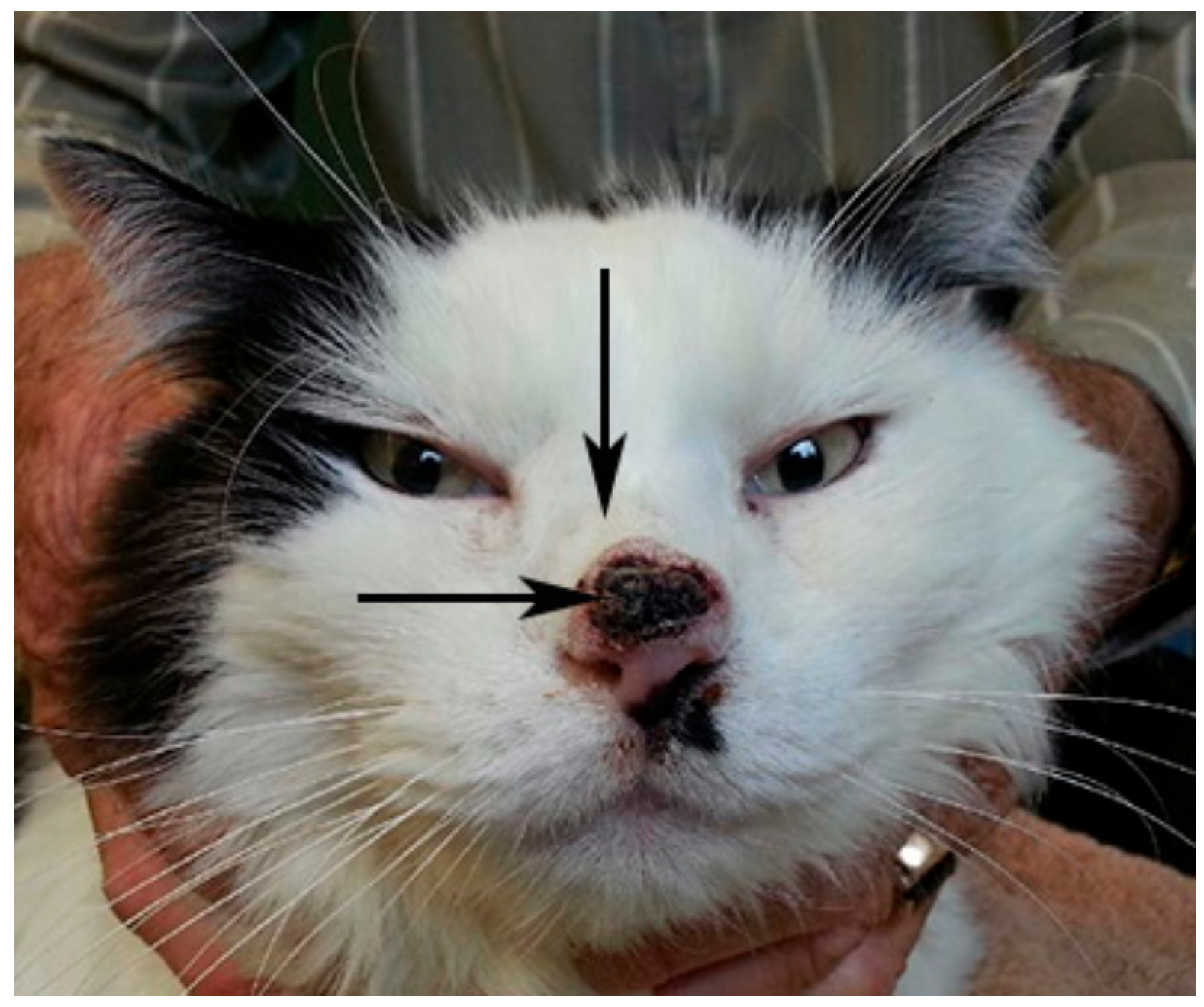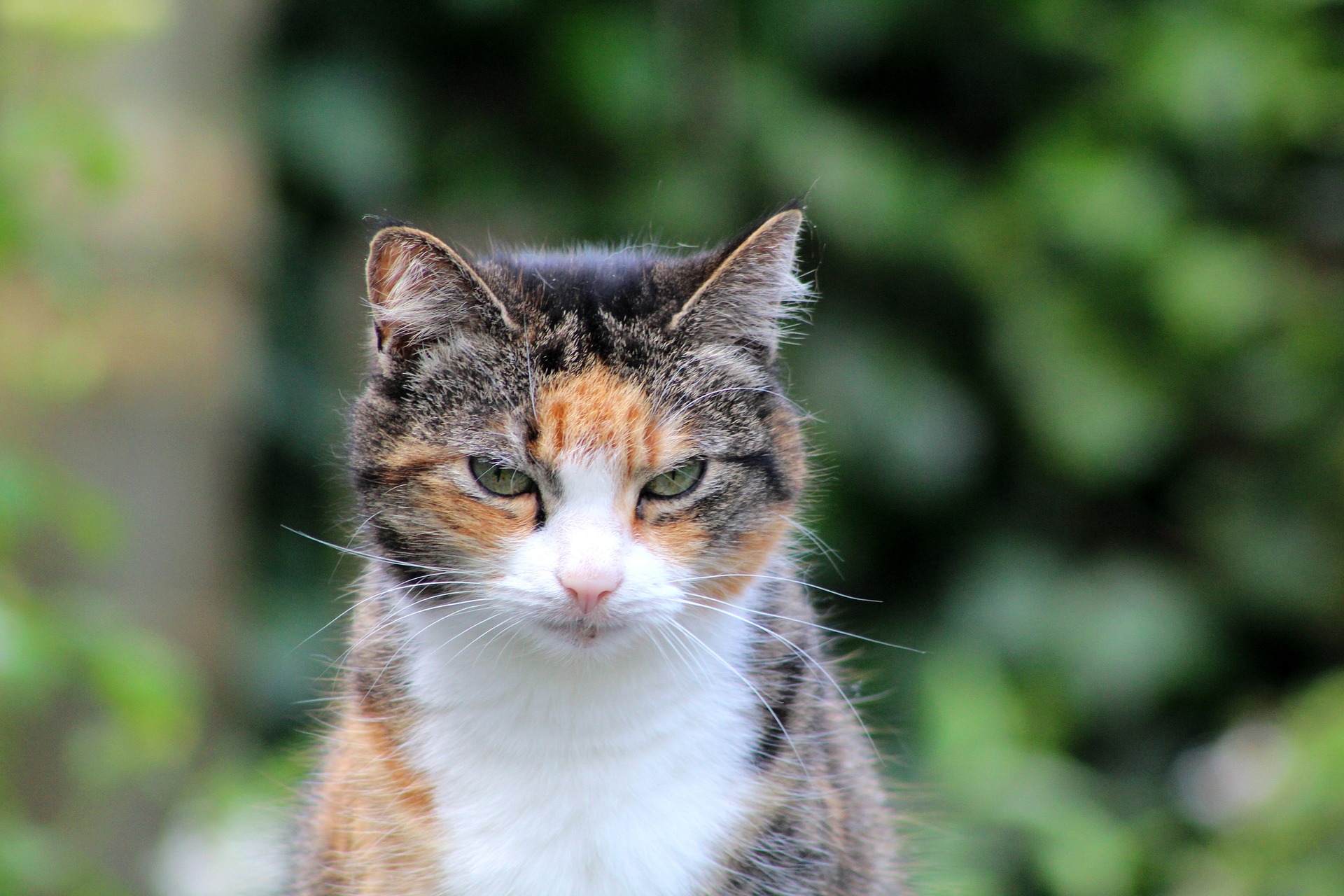lymphoma in cats australia
Ad Help your pet cope with symptoms like nausea loss of appetite and energy. It can occur in the nasal site 6782 nasopharynx 1016 or both locations 818 Little et al 2007.

Viruses Free Full Text Identification Of A Novel Papillomavirus Associated With Squamous Cell Carcinoma In A Domestic Cat Html
In 2021 it is estimated that a person has a 1 in 41 or 25 risk of being diagnosed with lymphoma by the age of 85 1.

. The symptoms and prognosis for cats with lymphoma depend upon the organ or organs affected and on the aggressiveness of the underlying cancer. Get NHVs most useful pet cancer supplements in one holistic pack. Lymphocytes are the second most important white blood cell behind neutrophils.
Over time it can grow large. Click on a title below to download. It may arise in lymphoid tissues such as lymph nodes spleen and bone marrow.
40-minute voice recorded PowerPoint presentation providing an overview of both small cell and large cell lymphoma in cats with an emphasis on the cause signalment clinical presentation biologic behaviour prognosis diagnosis and treatment options. Large cell lymphoma in cats is far more aggressive and has a poorer prognosis. Lymphoma is the abnormal proliferation of lymphocytes which are one of the main types of white blood cells involved in immunity.
Most feline physicians would agree that lymphoma synonym. Unfortunately says Margaret McEntee DVM professor of oncology at Cornell Universitys College of Veterinary Medicine it is the most frequently. Lymphoma can originate in any organ or tissue containing lymphocytes.
Some of the signs of intestinal lymphoma in cats are weight loss changes in appetite and vomiting andor diarrhea. Mediastinal Lymphoma This type of lymphoma grows in your cats chest usually between their lungs. Cats of any age may be affected with reported cases involving patients 4 months to 19 years of age.
These have been developed for patients carers families and friends. Ferguson et al 2020. More cats are now being vaccinated for feline leukemia.
Indeed the discovery in the 1960s that some types of feline LSA were associated with a retrovirus feline leukaemia virus FeLV resulted in an explosion of knowledge concerning LSA cats in general and virus-induced cancer. Lymphoma is connected with feline leukemia a viral infection see handout Feline Leukemia Virus Disease Complex. Renal Lymphoma in Cats Lymphoma can affect the kidneys as well.
About 90 of feline blood cancer cases are due to lymphoma which accounts for 33 percent of all feline tumors. The main signs of lymphoma in cats are vague illness weight loss and reduced appetite. In dogs palpably swollen lymph nodes are the most common symptom of lymphoma.
Lymphoma is one of the most common cancer in cats. 1 Valentine Charlton Cat Centre Faculty of Veterinary Science University of Sydney NSW Australia. Unlike lymphoma in dogs viral causes of feline lymphoma are well defined and the feline leukemia virus FeLV.
One of the most common causes of feline cancer lymphoma in cats largely affects the kittys digestive system because cancer causes it to constantly exposed to any array of compounds and organisms. Malignant lymphoma LSA is the most common malignancy of cats. The risk for lymphoma is increased sixtyfold in infected cats.
Lymphoma is the second most common cancer for feline patients. Cats have a higher incidence of lymphoma than dogs 20-30 of all tumors in cats. Small cell lymphoma is a slow-growing cancer-causing gut thickening whilst large cell lymphoma creates hard tumours in your cats guts andor stomach.
In 2017 there were 6317 new cases of lymphoma diagnosed in Australia 3635 males and 2682 females. The incidence of feline lymphoma ranges from 41 to 200 cases per 100000 cats. However lymphoma more commonly arises from other tissues in the body.
Diarrhoea see other causes at the link Abnormal swellings. Lymphoma is one of the most common cancers diagnosed in cats. Lymphoma in the nasal cavity is the most common tumor of cats upper respiratory tract Henderson et al 2004.
Will my cat be sick. What is the prognosis for lymphoma in dogs. Mediastinal Lymphoma in Cats If your cat has mediastinal lymphoma youre most likely to notice respiratory problems like difficulty breathing gasping or wheezing.
The average age of cats presenting with lymphoma in Australia is 11 years however there is a wide range from 1 year to 20 years. Lymphoma Australia has developed a number of resources and fact sheets to assist you with information about lymphoma and CLL. Lymphoma is a cancer of a white blood cell called a lymphocytes.
Lymphoma in Cats 2020 Sale Price500 Original Price2000. Feline lymphoma most commonly affects the intestines. It is still a frequently-seen cancer accounting for approximately 30 of new feline cancer diagnoses.
Of 118 affected cats presented to the authors over a 18-month period 97 were evaluated haematologically and 87 biochemically. Lymphoma is found to be responsible for around 90 percent of blood cancers and account for about 33 percent of all tumors in cats. Moreover it is the most common cause of.
Other signs depend on the organ affected by the tumour and can include. To describe for the first time haematological and serum biochemical findings in cases of lymphosarcoma in Australian cats. A prospective multi-institutional study.
Lymphoma can occur in the chest causing coughing and labored breath. Lymphoma the most commonly diagnosed neoplasm in cats1-3 accounts for 90 of hematopoietic tumors and 33 of all tumors in cats. Lymphoid neoplasia accounts for an incidence of 200 per 100000 cats at risk and is 90 of all feline hemopoietic neoplasms.
Lymphoma may involve neoplastic proliferation of T or B or non-Bnon-T type lymphocytes occurring primarily in the bone marrow lymph nodes and visceral organs. The retrovirus Feline Leukemia Virus FeLV has long been recognized as a cause of lymphoma in cats. Feline lymphoma is a malignant cancer of the lymphatic system the exquisitely structured arrangement of internal organs and tissues that directly or indirectly influences virtually every aspect of a cats physical existence.
Before the advent of a. The resources include easy-to-read fact sheets about specific subtypes supportive care and more in-depth publications. Cats may experience lymphoma of the nose which can cause sinus congestion nasal discharge sneezing and difficulty breathing.
Lymph nodes spleen liver gastrointestinal tract and bone marrow. Haematological analysis usually included. Therefore lymphoma is becoming less common.
It is a cancer of the lymphocytes a type of white blood cell and is found throughout many areas of the body which include. In 2021 it is estimated that 7207 new cases of lymphoma will be diagnosed in Australia 4136 males and 3071 females.

Pin By Art By Debbie On Cats In 2020 Cats Gorgeous Cats Cat Stock

Pin On Cats Health Behavior And Lifestyle

Cat Cancer Welcome To My Blog The Pet Oncologist

The 3 Most Common Cancers In Cats

My Cat Has Lymphoma What Does That Mean Vet Help Direct

Grass Seed Abscess Lump On Dog S Paw Nicfoundland Australia Vet Blog Dog Paws Paw Dogs

Subscribe My Channel Cat Adoption Cats Cat Pics

Lymphoma In Cats The Pet Oncologist

Me And My Boy In Our Shark Snuggies Https Ift Tt 309daqw Cat Pics Cat S Cat Photo